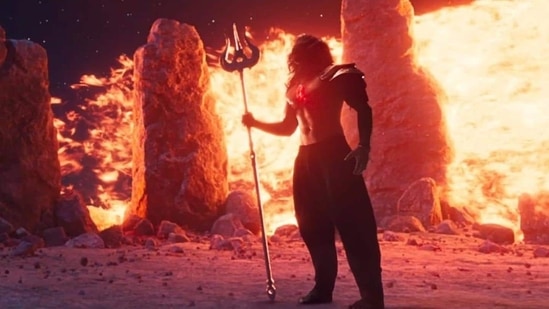Brahmastra VFX boss, producer Namit Malhotra on Adipurush comparisons: ‘That our effort is getting even more praise…’
Brahmastra Part One- Shiva is not just minting money at the box office but also getting praise for its visual effects. The Ayan Mukerji directorial has been praised for its VFX and pushing the boundaries in that genre as far as Indian cinema is concerned. Namit Malhotra, who heads Prime Focus, the team behind Brahmastra’s VFX, speaks to Hindustan Times about the praise, comparisons with other films like Adipurush, and the vision going forward. Also read: Adipurush director Om Raut defends teaser amid criticism of VFX
Namit is a producer on Brahmastra apart from helming the much-talked about visual effects for the film. Talking about the positive reception to the film’s VFX, he says, “When such good things happen, it doesn’t necessarily sink in because when you are in that creative zone, you don’t think about the outcome. As I have settled down, what I have realised is that this was a very long cherished dream of mine, of bringing the best world can offer to our Indian cinema. With all the praise and validation we have had, it does feel fulfilment of a dream and start of a new journey.”
Weeks after Brahmastra’s release, the teaser of another VFX-heavy film Adipurush was released and many criticised the graphics there as ‘amateurish’. In fact, some praised Ayan and Brahmastra even more, comparing Adipurush to it unfavourably. While refusing to comment on Adipurush itself, Namit says, “No matter how confident a filmmaker is about their work, ultimately it boils down to what the audience feels. The audiences are the judge of what will work and what is not going to work. The fact that our effort has been applauded and is getting even more praise only makes me thankful that we were able to get there. Creation is always complicated. Everybody tries to do the best they can in their mind. Does it hit the bullseye or not is ultimately the decision of the audience. So for us, it’s not arrogance but relief that the audience likes it.”

He agrees that even Brahmastra got its fair share of criticism as there was a lot in the film’s visual effects that people did not like. “Even for Brahmastra, we got criticism also apart from praise, which is fair. We thought some of those things were pretty good but the audiences didn’t appreciate. Judgment is always subjective in these matters. We will take all this into consideration moving forward. It would be foolhardy for us to get clear feedback and not make sure that do not deliver better in the next part,” he says.
Brahmastra took seven years to make, during which there were delays due to budget, VFX hurdles, and the Covid-19 pandemic. Talking about how the team stayed energized despite the roadblocks and delays, Namit says, “There was no uncertainty. We had lots of challenges from a financial standpoint and time availability and then we had Covid in between. We had to make sure all the other teams were running in sync with what we were trying to do. We are trying to be judicious with everything. There was an intense approach to it and I give a lot of credit to Ayan for staying on course all this time. Yes, the time can make you feel fatigued but the process of creation continues. It actually kept us all excited as we kept seeing new things. You learn to enjoy the journey.”

Already many are calling Brahmastra–along with other films like Ra.One and Enthiran–the gold standard of visual effects in Indian cinema. But Namit does not want to rest on those laurels. “There is a common theme in the industry that our work gets outdated the moment it is released. You have done it. If you have to do the same thing, that’s not hard. It’s always finding the next phase of it is challenging. The good thing about what we do is that there is nothing stopping imagination. There is so much out there that we feel we could be creating. This puts us on a track to keep raising the bar,” he says.
But he does feel that he and Prime Focus have a lot to offer to the film industry now with the success of Brahmastra. He says, “In 1975, we made Sholay and around the same time, in 1977, Hollywood made Star Wars. They took the art form of Star Wars and made a whole industry and grammar of filmmaking. But after we made Sholay, we couldn’t really top it until now. We are, now, making a lot of headway to take it to the next level. That’s where our industry will finally be able to bring that big screen, larger-than-life experience to our audiences. There is a lot of ground we can cover.”
For all the latest Entertainment News Click Here
For the latest news and updates, follow us on Google News.

